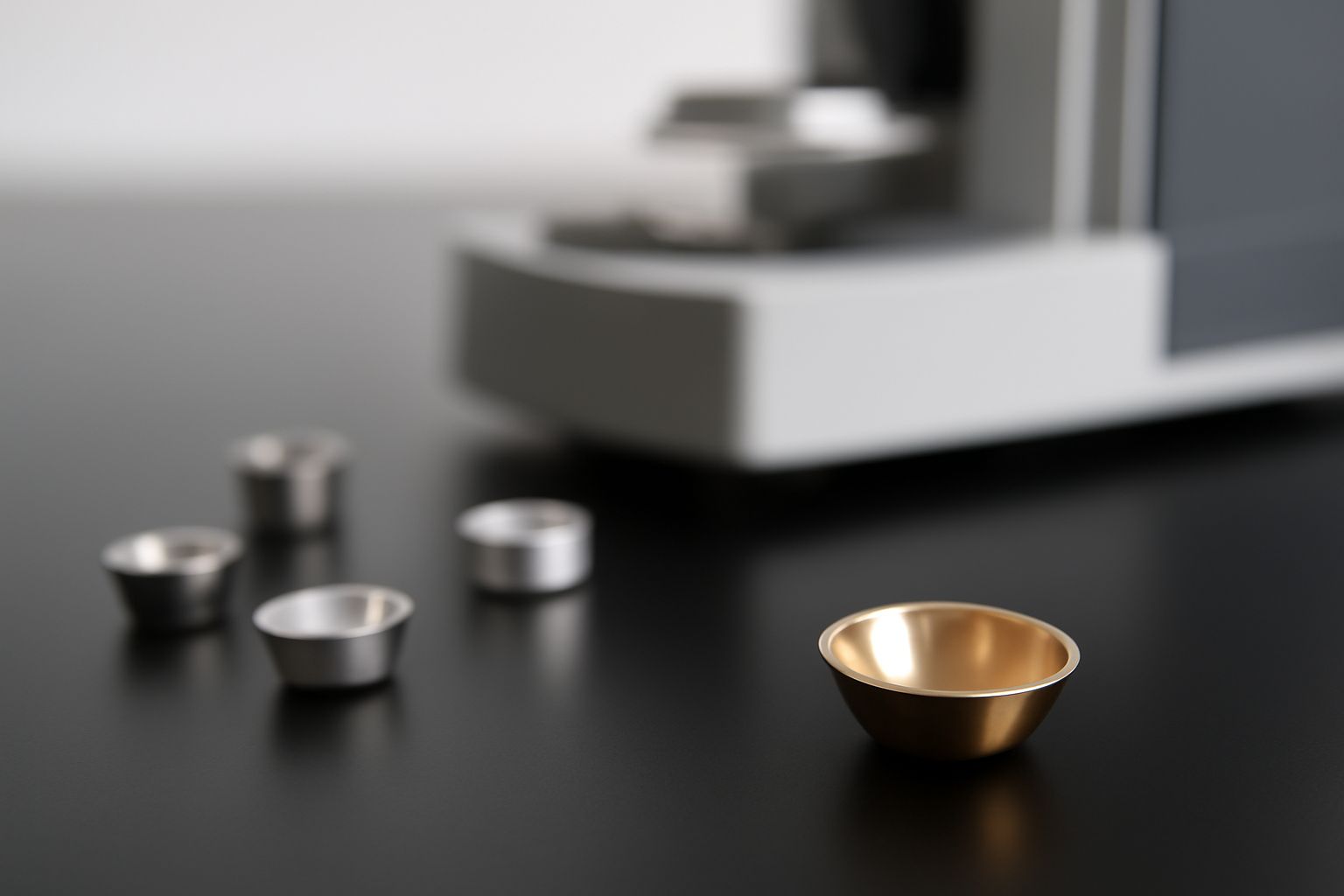Your cart is empty.
shop now
Your cart is empty.
shop now
Confusing results in polymer testing often come from ignoring simple details like pan size and material. I find these choices affect every step of the thermal analysis.
Technical specifications such as pan size, material, and seal design decide how DSC consumables work with your instrument and sample. They directly affect measurement precision and test safety.

I always remind teams that every polymer test depends on more than just the instrument model. Choosing the wrong pan or seal means wasted time and bad results. Let’s look at each critical parameter that shapes reliable DSC analysis.
I have seen tests fail just because the pan was too small or the wrong metal. The right fit makes the experiment run smooth and reduces errors.
DSC pans typically come in sizes ranging from 20 to 60 microliters and are made from materials like aluminum, platinum, or gold. The selection depends on sample volume, chemical reactivity, and required temperature limits.
| Pan Material | Volume (µL) | Temperature Range (°C) | Main Use |
|---|---|---|---|
| Aluminum | 20–60 | -170 to 600 | Routine polymer DSC analysis |
| Platinum | 30–50 | -190 to 1700 | High-temp and reactive samples (platinum info) |
| Gold | 20–50 | -190 to 1000 | Oxidative stability and sensitive samples |
| Ceramic | 25–40 | up to 1200 | Extreme temperature environments |
| PTFE | 10–30 | -190 to 260 | Chemically aggressive, low-temperature polymers |
Whenever I am not sure, I use data from DSC suppliers to compare pans. Matching the pan size and capacity avoids spills or shortages, which helps every result.
One poor heat transfer in a test can lead to hours of troubleshooting. That’s why I always check the pan’s material first.
Pan material decides how heat moves to the sample and impacts the accuracy of critical polymer testing values, such as glass transition and melting point.
| Material | Thermal Conductivity | Effect on Measurement |
|---|---|---|
| Aluminum | High | Quick, even heating; best for routine DSC; may oxidize |
| Platinum | Moderate | Stable for extreme conditions; less reactive (calorimetry basics) |
| Gold | Good | Excellent for low-reactivity and oxidation studies |
| Ceramic | Low | For very high temps; slower response |
| PTFE | Low | Used rarely; high chemical resistance |
Industry data and thermal analysis textbooks show that picking the right pan metal avoids sample decomposition and false transitions. I always log the material used so comparison is accurate.
Every polymer behaves differently when heated. The wrong seal leaks out volatiles or lets in air, making results useless.
Sealing options for DSC pans include standard lids, hermetic (airtight) lids, pierced lids for venting, and O-rings. Each option keeps the polymer safe during thermal analysis in a different way.
| Seal Type | Application | Strength | Drawback |
|---|---|---|---|
| Standard Lid | General measurements | Easy, quick setup | May leak with volatile samples |
| Hermetic Lid | Moisture or solvent analysis | Airtight; prevents loss | Not suitable if sample releases gas under heat |
| Pierced Lid | Gas exchange required | Prevents pressure buildup | Cannot stop evaporation |
| O-Ring | Extra seal for hermetic pans | Improved sealing (O-ring guide) | May need replacement |
When testing a new polymer, I always run a check with water samples to see if a lid leaks. Explanations in lab equipment guides show why the right seal keeps tests accurate and safe.
Mixing the wrong pan and DSC model causes poor signals, even instrument damage. Compatibility checks prevent lost time.
To ensure compatibility, always match pan geometry and sealing features to your DSC instrument’s specifications and use supplier-provided compatibility tables for direct reference.
| Compatibility Issue | Check | Solution |
|---|---|---|
| Pan Size/Shape | Measurement matches DSC platform | Use original equipment specs or supplier charts |
| Material Safety | Test what is allowed by manufacturer | Follow instrument safety notes |
| Sealing Feature | Lid design fits sensor requirements | Confirm with application specialist or test guide |
| Brand-Specific Fit | Listed as compatible by supplier | Buy from trusted supplier like REDTHERMO |
Supplier databases, especially those from recognized brands, save me from guesswork and the cost of a failed batch. I always keep a printed copy of allowed pan models at my bench for fast checks.
Technical details in DSC consumables decide the success of every polymer test. Know your requirements to avoid errors and keep your results reliable.
Contact Technical Support